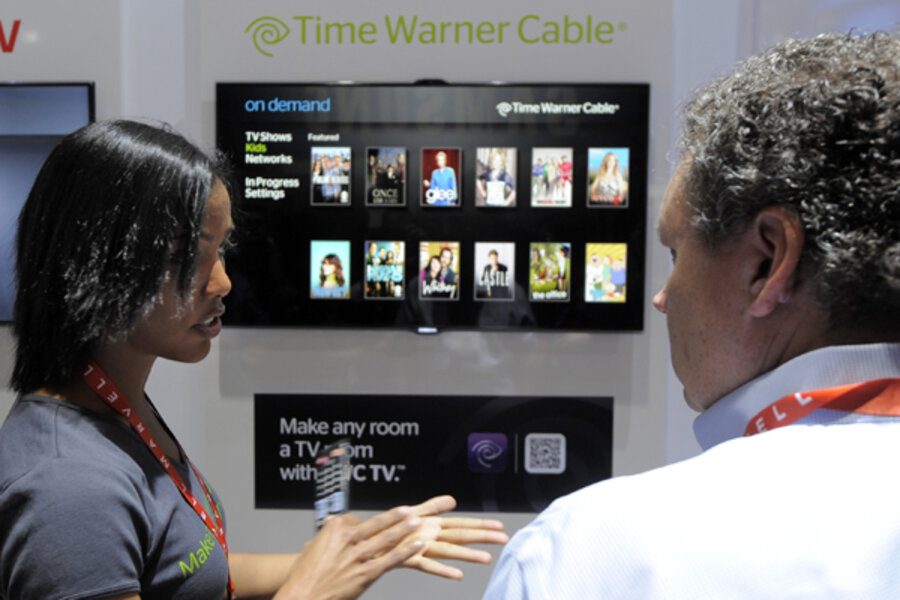CES 2012: Smart TVs invite you to ditch the remote
Loading...
As the 2012 Consumer Electronics Show gets underway in Las Vegas on Tuesday, one trend is already apparent: TV shopping isn't just about looks anymore. This year's top televisions will need inner beauty.
Samsung, LG, Lenovo, and other electronics companies have introduced new smart TVs with Web applications, voice and gesture commands, and scads of other features. If you're in the market for a new, cutting-edge TV, this is going to be a very good year.
Let's take a quick tour of what's on offer, with the caveat that the prototype models on the floor at CES likely won't be available in stores for a few months still. The trend is toward thinner, brighter TVs with greater Web connectivity (think social networking in addition to YouTube, Netflix, and the like). Of course, there are Wi-Fi-enabled smart TVs on the market already – but CES shows us what's around the corner.
First, there's a push to ditch the remote. LG and Lenovo both introduced TVs that allow users to search for content with voice commands, and Samsung is taking it a step further with motion control similar to what's found in the Xbox 360 Kinect. Turn on the TV with a word, flip through channels with a gesture. Some Samsung TVs will even incorporate facial recognition to log users into applications such as Skype. Is it superfluous? Maybe. Will it make you feel like you're living in the future? Absolutely.
TV picture quality is getting a bump this year, as well. A lot of the buzz at CES revolves around OLED displays, which are famous for their deep colors and sharp picture. Several high-end smart phones have them, but until recently the screens have been too expensive to manufacture at large sizes. On Tuesday both LG and Samsung unveiled 55-inch OLED displays with super-crisp picture quality. (Lest you think we're making too big a deal out of this, CNN's Brandon Griggs noted that "there was an audible gasp in the room when it [the LG model] was unveiled, and a throng of photographers crowded around the set afterward like paparazzi around a starlet.") It's worth noting that these expansive sets will also be expensive -- they're expected to sell for upward of $6,000 at first, although the prices will inevitably come within reach of the average consumer.
Finally, CES brings us TVs with deeper Web connectivity than ever before. If you watch TV with a laptop or tablet nearby to chat with friends during commercials, you're not alone – and TV makers are hoping to obviate the need for that external device. Panasonic, for example, introduced a line of TVs that will funnel social-media updates directly to your screen, as well as enable split-screen Skype chatting while you're watching your shows. And the Google TV platform, which garnered mostly disappointed reactions at its debut last year, is getting a refresh. CEO Eric Schmidt even talked about how the platform will eventually enable TVs and home appliances to talk to each other.
These TVs may only be prototypes, and many will be priced far out of the reach of ordinary consumers at first. But CES offers us the first glimpse of a future filled with expansive, svelte, drool-worthy screens. Why not enjoy a peek into tech's crystal ball?
For more tech news, follow us on Twitter @venturenaut. And don’t forget to sign up for the weekly BizTech newsletter.






